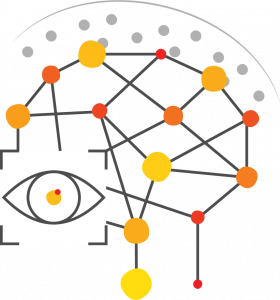
The NeuroLab: Vision and Cognitive Neuroscience is a place reserved for assessing visual function using psychophysical and electrophysiological techniques. In this laboratory, a wide range of stimuli can be used to assess the visual field. The assessment of colour vision along the three axes of confusion and the contrast sensitivity curve for various spatial frequencies can be obtained. In the electrophysiological field, it is possible to carry out an objective assessment of the neuronal function of the retina and the functional integrity of the entire visual system through the strategic placement of electrodes. In terms of the structural approach, optical coherence tomography can help characterise pathological clinical findings and determine the thickness of the retinal and choroidal layers. In addition, the vascular network of the choroid and retina can be studied without the use of contrast. This method is also useful for assessing the morphology of the optic nerve and the thickness of the retinal nerve fibre layer. By using electroencephalography (EEG), the lab is able to collect data and obtain information on cognitive functions, the effects of neuromodulation on the brain and the impact of visual changes on cortical function. The Neuro Lab: Neuromodulation is the specialised unit that seeks to explore the potential of neuromodulation as a treatment for various conditions and as a tool for studying cognitive and visual functions. Neuromodulation involves the direct alteration or modulation of nerve activity using electrical or pharmaceutical agents related to a specific target area. The laboratory’s research focuses specifically on Transcranial Direct Current Stimulation (tDCS), Transcranial Magnetic Stimulation (TMS) and Cognitive Training.
Laboratory Coordinators: Nuno Rocha, Catarina Mateus, Liliana Teixeira
Laboratory Manager: Simão Ferreira
